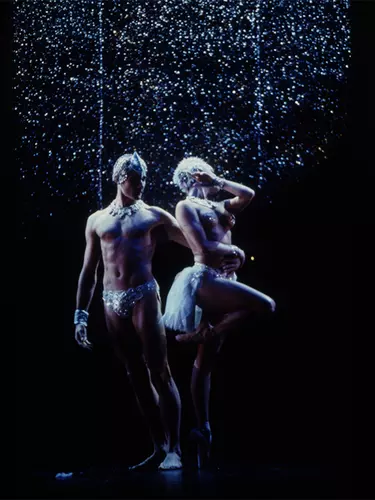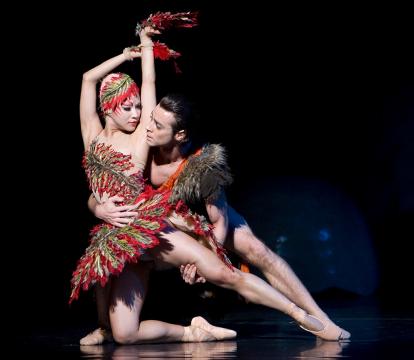Graeme Murphy is ballet’s fearless leader
Ten classic works reimagined by the dancer & choreographer
The audience in the Princess Theatre for The Australian Ballet's inaugural Choreographic Workshop in 1971 may have felt a frisson as they watched Ecco le Diavole. It was the first work of a budding choreographer called Graeme Murphy, and history was being made.
Murphy was picked out by Margaret Scott, the director of The Australian Ballet School, at the age of just 14. He joined The Australian Ballet in 1968; he danced with the company and overseas, and freelanced as a choreographer, before taking the helm of the Dance Company (NSW), later the Sydney Dance Company. Over the next 30 years, Murphy, with his partner and artistic associate Janet Vernon at his side, would stream through the dance world like a comet, making countless works for his company and fostering the careers of Stephen Page (now director of Bangarra Dance Theatre) and Gideon Obarzanek (who went on to direct Chunky Move).
As well as enriching the Sydney cultural scene and making his mark internationally (choreographing for the likes of Mikhail Baryshnikov and Nederlands Dans Theater), Murphy returned several times to The Australian Ballet to create work, each time lifting its dancers to inspired heights. Ballets like Swan Lake, Nutcracker - The Story of Clara and Beyond Twelve found permanent places in the repertoire. Swan Lake, in particular, was a case of enduring love: we have performed it almost every year since its creation in 2002. Generations of dancers have grown up with Swan Lake, moving from minor roles to stardom, and almost all of our principal artists started out carrying trays of champagne in the ballroom scene or fluttering around the frozen lake before moving up the ranks and dancing the lead roles.
What Murphy teaches our dancers is what makes him a great choreographer: fearless partnering; deep, authentic emotion; sophisticated musicality; a sensual breadth of movement; and a distinctly Australian sense of humour that punctures pomposity.
Here are some of his precious gifts to us.
Glimpses (1976)
Murphy made Glimpses for the 1976 Choreographic Workshop; he later staged it on Sydney Dance Company. Here, his muse Janet Vernon and future artistic director of The Australian Ballet Ross Stretton show themselves triumphantly equal to the challenges of his vertiginous choreography.
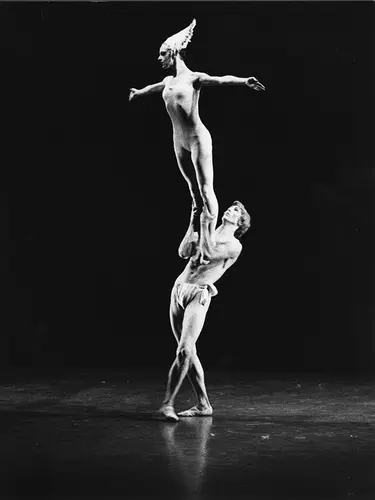
Nutcracker — The Story of Clara (1992)
Murphy's first full-length production for The Australian Ballet came in 1992. The then-director Maina Gielgud commissioned him to make a new version of the classic Tchaikovsky ballet, but she may have got more than she bargained for. "I think Maina thought I would keep the original and I was almost going to say no, as the story was so flimsy," says Murphy. "I’m always one to look for a meaningful story, and it would have been very hard for me to take the original story and concept when the music for me was screaming something else. I also needed to find something that didn’t throw out the baby with the bathwater ..." That something turned out to be the life of Clara, a Ballet Russes dancer who settles in Australia after an eventful past. Poignant, vivid and cinematic in scope, the ballet became an audience favourite.
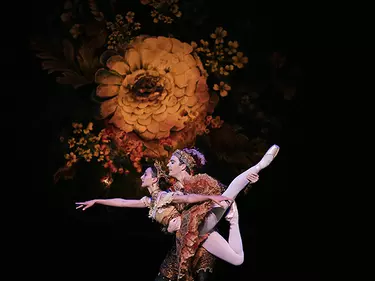
Swan Lake (2002)
On an opening night of Nutcracker - The Story of Clara, David McAllister, who had danced the Nutcracker Prince, asked Graeme Murphy if he'd ever thought of transforming another of the great classical ballets. "Swan Lake", came the answer.
By 2001, McAllister was artistic director of The Australian Ballet, and his first commission was Murphy's Swan Lake. He struck gold.
Murphy, Vernon and designer Kristian Fredrikson took the iconic elements of the ballet - the lake, the swans, a passionate entanglement that goes tragically wrong - and brought them into the modern era. A philandering prince, a rapacious baroness and a lost, fragile princess form a disastrous love triangle. Controversial at its premiere, the ballet was quickly acknowledged to be a masterpiece, and as swiftly became the company's signature work.
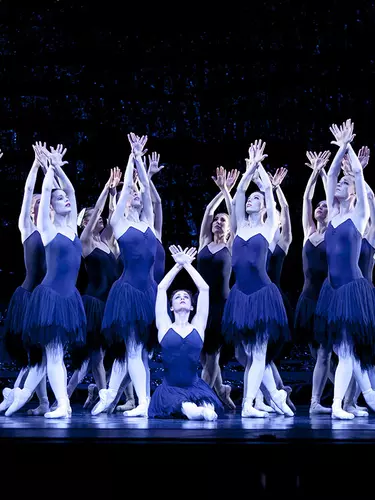
Beyond Twelve (1980)
Using the music of one of his favourite composers, Ravel, Murphy shaped this bittersweet, semi-autobiographical tale of a boy's youth in suburban Australia, his career as a dancer and the end of that career. Three dancers portray each phase of his life, which moves from larking around on the football field to the ballet barre, first love, fame and the shadow of retirement. Kelvin Coe, the originator of the 'Beyond Thirty' role, was one of the company's greatest stars, and died tragically early.
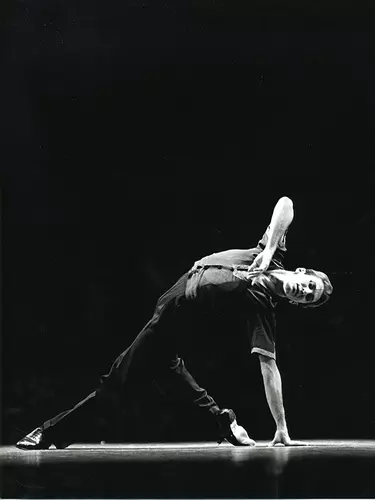
The Silver Rose (2010)
The Silver Rose was adapted from the opera Der Rosenkavalier, about an ageing actress who fears losing her beauty - and her much younger lover. Roger Kirk's design, referencing Klimt and fin de siècle glamour, perfectly frames this story of decadence, sexual jealousy and sacrifice.
You can see the hallucinatory opening sequence of The Silver Rose in our Murphy program.
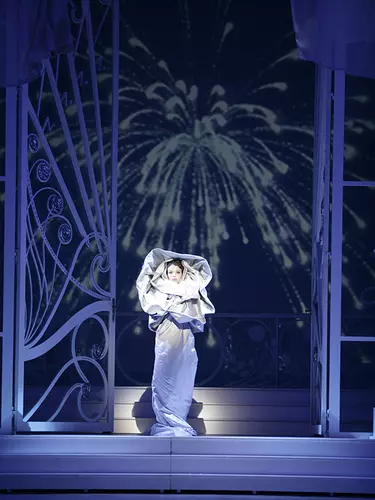
Firebird (2009)
The Firebird, based on a Russian fairytale, was a classic of the Ballets Russes repertoire. Murphy's version, with a twitchy, feathery Firebird and a reptilian magician, gives the work a spiky modernity perfectly in tune with its Stravinsky score.
You can see Firebird in its entirety both as part of the Murphy program and, in Sydney, as a lunchtime stand-alone.
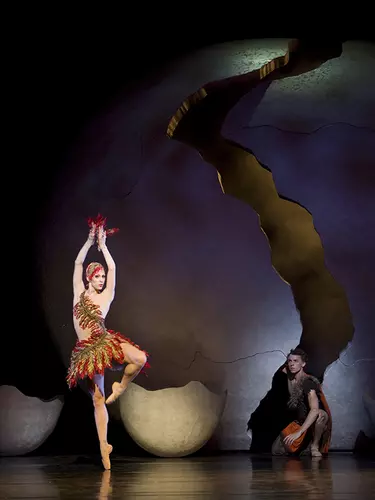
Romeo & Juliet (2011)
The third ballet classic Murphy tackled for The Australian Ballet was Romeo and Juliet. Again, beloved elements (the storyline, the Prokofiev score) were kept intact, but Murphy's Romeo & Juliet shattered the stately Verona setting into a kaleidoscope of global locations: a desert tomb, an ice palace, a Bollywood-gaudy market square, a Buddhist temple. Haute couture designer Akira Isogawa created bold designs to match, theming the Montagues around guns and the Capulets around roses.
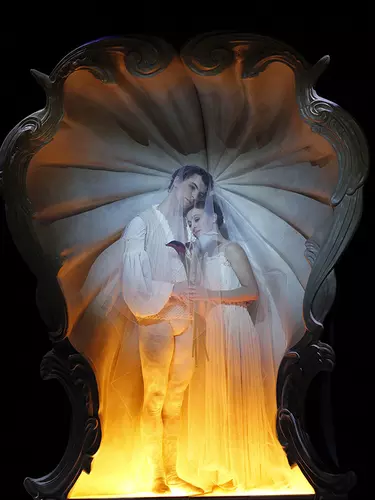
The Narrative Of Nothing (2012)
Brett Dean's Fire Music was written to evoke the catastrophic Black Saturday bushfires that swept Australia's south-east in 2009. Murphy's work to Dean's score was abstract - its title evokes the tendency of audiences to overlay their own meaning onto pure dance - but the shimmering heat of the music, Jennifer Irwin's sleek, gleaming unitards and the attack of the movement certainly added up to incandescent effect.
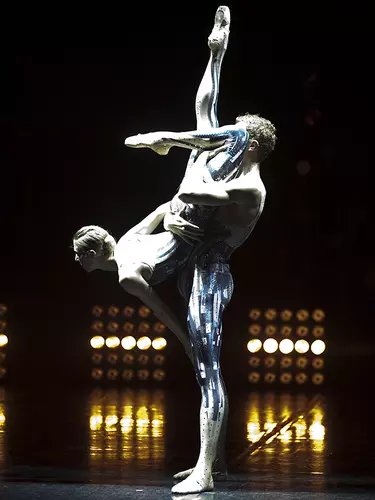
Gallery (1987)
Gallery was commissioned for Australia's Bicentennial celebrations and set to a commissioned score by Graeme Koehne. Murphy brought his customary erotic charge to the notion of a gallery where the works of art come to life and mingle with the humans.
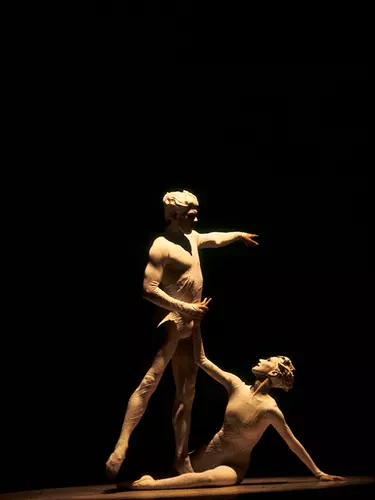
Tivoli (2001)
For Murphy, growing up in 1950s Tasmania, cultural stimulation was thin on the ground. However, thanks to the Tivoli revue, his first experience of dance, he was exposed to the enchantment of the theatre. Tivoli, a co-production of The Australian Ballet and Sydney Dance Company, was his loving tribute to the sequins, feathers and pasties of this beloved variety show. Packed with comedians, crooners, contortionists and strongmen, it ended in a spectacular Swan Lake-themed burlesque.
